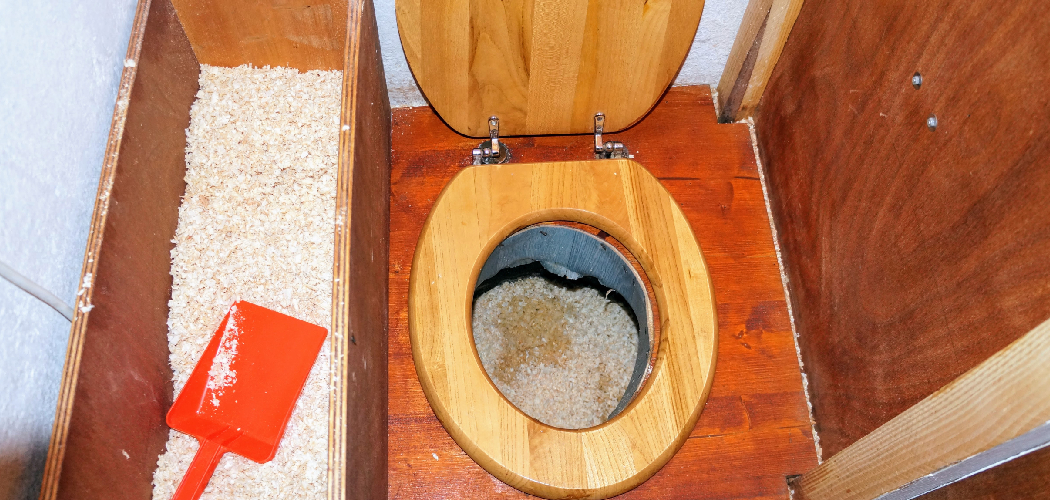Are you passionate about sustainability and environmental preservation? Are you interested in cutting down your environmental footprint and learning a more sustainable way of living? If so, then composting toilets may be the perfect home improvement project for you.
Composting toilets are an eco-friendly alternative to traditional toilet systems that can help reduce your household’s environmental footprint with minimal effort.
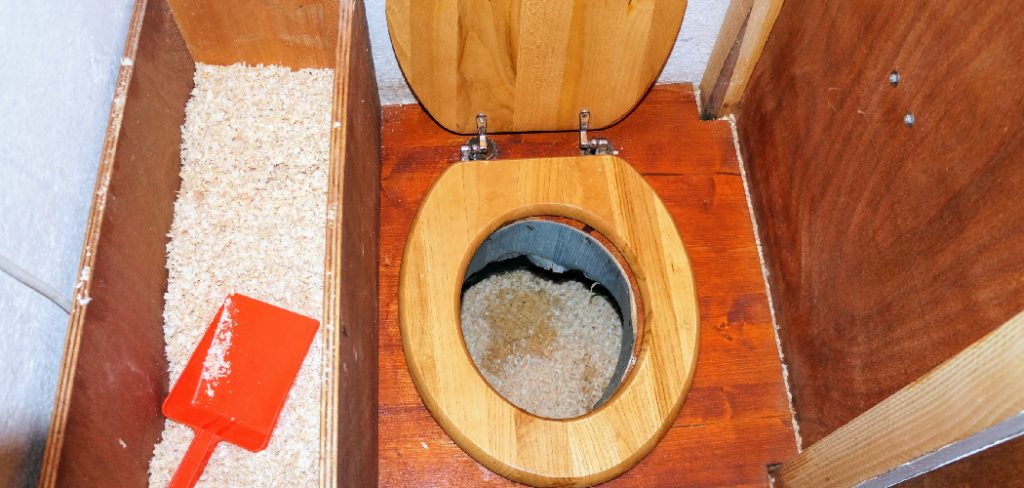
Not only do they provide a great solution for off-grid homes, they’re also effective in reducing water usage and helping manage waste in other settings as well. In this blog post on how to use a composting toilet, we’ll discuss all of the benefits associated with using a composting toilet and answer some FAQs so you can confidently decide if one is right for your home.
What is a Composting Toilet?
A composting toilet is a type of toilet system that uses anaerobic bacteria to break down the waste material into fertile, nutrient-rich soil. The decomposition process happens within the composting unit, which has two separate chambers for solids and liquids. As the bacteria break down the material in each chamber, it creates compost known as “humanure”.
How Does a Composting Toilet Work?
Composting toilets use a combination of aerobic and anaerobic bacteria to break down solids and liquids into nitrogen-rich compost. In the solid chamber, aerobic bacteria are used to decompose the waste materials into a more stable form. This process requires oxygen, so a fan or other ventilation system is used to ensure that the bacteria have enough air.
In the liquid chamber, anaerobic bacteria are used to break down the material into more manageable pieces. This process does not require oxygen and produces fewer odors than aerobic processes. After both processes are complete, the humanure can be safely used as a soil amendment in gardens or other outdoor areas.
The Benefits of Having a Composting Toilet
1. Eco-Friendly
Composting toilets are an efficient, eco-friendly way to manage your household waste. They reduce water usage and can help prevent groundwater contamination by preventing potentially harmful bacteria from entering the environment. Additionally, composting toilets are easy to install and require minimal maintenance.
2. Cost-Effective
Composting toilets is a cost-effective home improvement project that can reduce your water bill substantially over time. The initial cost of installing a composting toilet may seem expensive, but the long-term savings more than makeup for it in the long run.
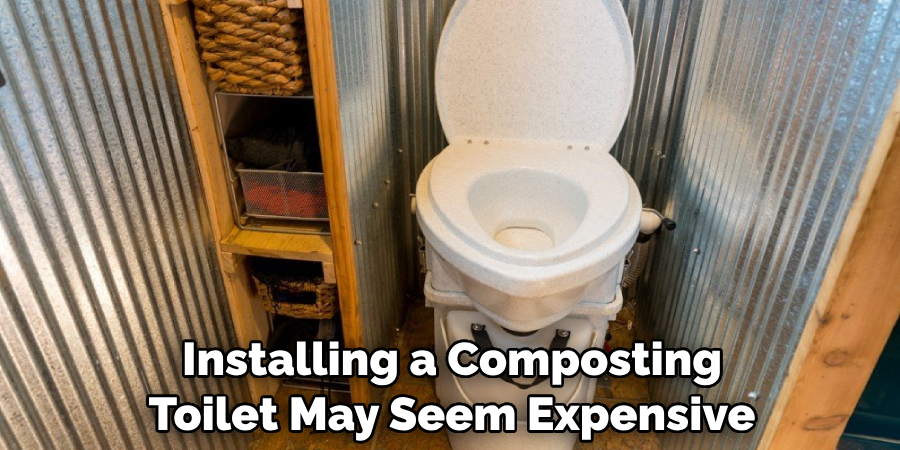
3. Low Maintenance
Unlike traditional toilets, composting toilets require minimal maintenance and are easy to use. All you need to do is add an occasional scoop of sawdust or wood chips to the solid chamber when it gets full. And since there’s no plumbing involved, you don’t have to worry about clogs or leaks.
Required Items for Using a Composting Toilet
When it comes to using a composting toilet, there are a few items that you’ll need to make sure the process runs smoothly. These include:
- Compostable liners or bags – these are needed to collect the waste and keep it separated from the solid chamber.
- A rake – this is used to mix the composting material in the solid chamber and help speed up the decomposition process.
- Wood chips or sawdust – are added to the solid chamber periodically to absorb moisture and help create air pockets for the aerobic bacteria.
- Ventilation system – this allows for adequate airflow in the solid chamber and is necessary for composting to take place.
10 Ways How to Use a Composting Toilet
1. Read Instructions
Read the manufacturer’s instructions thoroughly before using the composting toilet. The instructions are the best source of information on how to safely operate and maintain your composting toilet. Also, it will provide you important information on the types of materials that can or cannot be used in your composting toilet.
2. Choose Compostable Liners
When it comes to choosing compostable liners for your toilet, make sure you select ones that are certified compostable and biodegradable. This ensures that the waste is properly contained and won’t contaminate the surrounding environment.
3. Separate Solids
When you use the toilet, make sure to separate solid waste from liquid waste. This helps speed up the decomposition process and prevents clogs in the system. Use a small shovel or rake if needed to ensure that all of the material is separated.
4. Add Wood Chips or Sawdust
After you’ve emptied the solid chamber, add a layer of wood chips or sawdust to absorb moisture and help create air pockets for the aerobic bacteria to do their work. This will also help reduce odors in the unit.
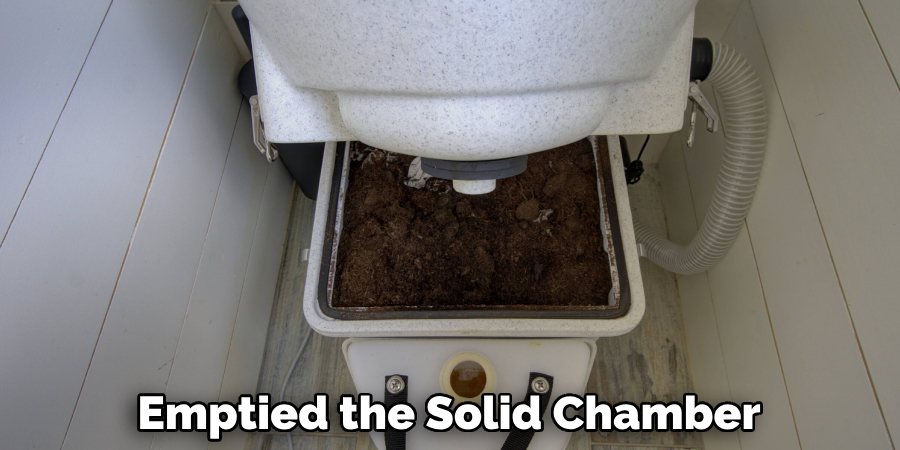
5. Check Ventilation
Make sure to regularly check the ventilation system in your composting toilet. This will ensure that there is adequate airflow for the aerobic bacteria and that the process of decomposition is running smoothly.
6. Monitor Moisture Levels
Monitor moisture levels in your composting toilet by checking the contents regularly. The material should be damp but not overly wet. If it’s too dry, add more wood chips or sawdust; if it’s too wet, aerate the material with a shovel or rake.
7. Stir Composting Material
Stir the composting material in both chambers periodically to ensure proper decomposition and reduce odors. This can be done with a rake or other tool.
8 Maintain Proper Temperature
Composting toilets work best when the temperature is between 60 and 80 degrees Fahrenheit. If it’s too cold, add more material to help keep the system warm; if it’s too hot, reduce the amount of material in the unit.
9. Empty the Liquid Chamber Every Few Days
It’s important to empty out the liquid chamber every few days or as needed to prevent it from overflowing. Empty the contents into a container and use it for watering plants or other outdoor uses.
10. Replace Filter Regularly
If your composting toilet has a filter, make sure to replace it regularly. This will help keep the unit clean and running smoothly. Also, consider using a filter with activated charcoal to help reduce odors.
With proper maintenance and care, composting toilets can be an efficient and eco-friendly way to manage your household waste. By following the steps above, you’ll be sure to get the most out of your composting toilet.
8 Maintenance Tips
When it comes to composting toilets, maintenance is key. Here are six tips for keeping your composting toilet in tip-top shape:
1. Use only special biodegradable toilet paper that has been approved for use with a composting toilet. Regular household toilet paper may not break down properly and can cause clogs and blockages.

2. Do not put anything into your composting toilet other than human waste and approved toilet paper. Anything else, such as feminine hygiene products, diapers, plastic wrappers, etc., can cause blockages or contaminate the composting process.
3. Keep your composting bin clean by wiping it down with a damp cloth and a mild biodegradable detergent. The bin should be emptied when it is nearly full. Keeping on top of cleaning will help reduce odors.
4. Avoid flushing too much toilet paper at once. This can cause clogs and blockages in the composting bin. Flushing in small batches is the best way to go.
5. Regularly check for blockages or clogs in your composting toilet’s drain lines and pipes. If you find one, use a plunger or snake to clear it out.
6. Do not add too much water at once when flushing the toilet. This can cause the compost to become too wet and will slow down the composting process.
7. Make sure your composting bin is in a well-ventilated area that gets plenty of sunlight. The combination of air and sunlight helps speed up the composting process.
8. Regularly check the moisture level of your compost and add more water if necessary. It should be damp but not soggy. Too much moisture can cause the compost to become anaerobic and produce unpleasant odors.
By following these tips, you’ll be able to keep your composting toilet working properly for years to come!
4 Safety Precautions to Follow When Using a Composting Toilet
When using a composting toilet, it is essential to observe safety precautions. The following guidelines should be followed for optimal sanitary and safe use:
1. Make sure your compost pile is located at least 50 feet away from water sources such as rivers. This prevents microorganisms from entering the water and causing contamination. Composting toilets also need to be placed in well-ventilated areas.
2. Regularly clean and maintain the composting toilet, including emptying and refilling the tank with fresh material when necessary. This helps prevent odors from developing, as well as reduces the risk of contamination.
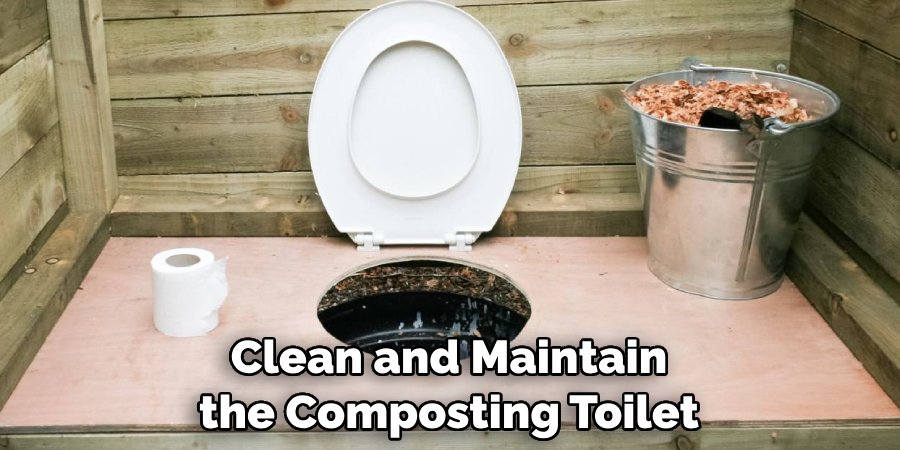
3. Wear protective gear such as gloves and a face mask when handling the compost. This protects you from any health risks associated with bacteria or other contaminants in the compost.
4. Avoid contact with the raw materials used in the composting process, such as human waste, animal manure, and food scraps. These can contain harmful bacteria that can cause illness if not handled properly.
By following these simple safety tips, you can ensure your composting toilet is used safely and properly.
Conclusion
Composting toilets offer several advantages and are an excellent choice for those aiming to lessen their environmental impact. Not only do they provide a far more sustainable solution than traditional sewage systems, but composted waste can also be used in gardening and landscaping!
Additionally, the process of converting human waste into a valuable resource eliminates many of the issues associated with disposing of it down the drain. This guide on how to use a composting toilet will help you through.
With these benefits in mind, composting toilets offer an innovative and beneficial way for individuals and communities to manage their waste. It’s certainly worth exploring the option if you’re looking for an eco-friendly alternative to regular plumbing fixtures.
Everyone has a role to play when it comes to mitigating human impacts on our planet—and considering composting toilets is a great place to start!

